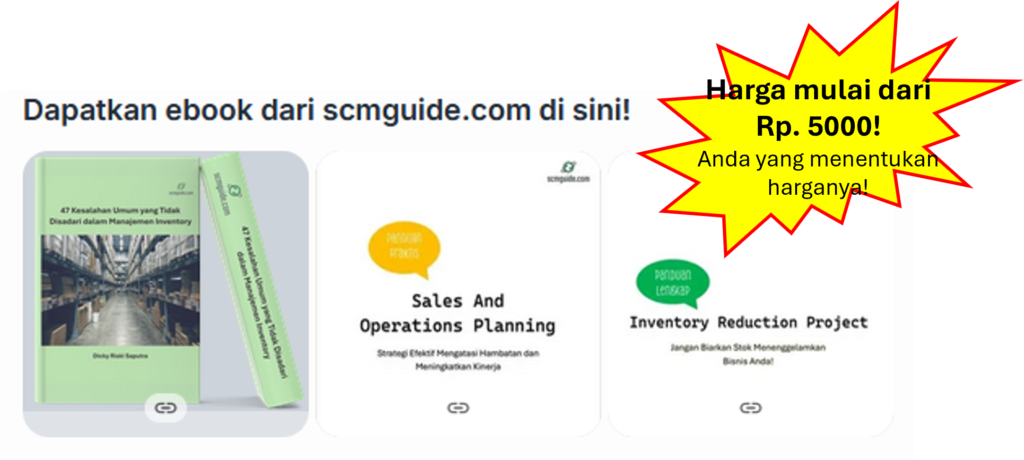In manufacturing and supply chain management, there’s a lot of talk about Production Planning and Inventory Control (PPIC). Some say it’s the key to making everything run smoothly, while others think it gets in the way of departments working together. But is PPIC really as controversial as people make it out to be? Let’s find out.
Before we go further into this topic, don’t forget to follow my LinkedIn account. You’ll get more helpful insights on supply chain management there.
Table of Contents
Debunking the Myth
Misunderstandings about PPIC often come from seeing it as a bossy force that imposes strict rules and unrealistic goals on departments.
This view can make departments feel frustrated and constrained because they think PPIC’s decisions are random and don’t consider their needs.
But actually, PPIC has a much more complex job.
It’s not just about giving orders; it’s about making sure everything works together smoothly.
PPIC balances different needs and uses resources wisely to help the whole organization succeed.
The confusion about PPIC mostly comes from not fully understanding its role. PPIC is like a bridge between different parts of the organization, like production, inventory, and sales. It makes decisions based on lots of factors, like what customers want, what resources are available, and how much can be produced.
But without knowing all this, departments might see PPIC’s decisions as strange or disconnected from what they do every day.
To clear up these misunderstandings, organizations need to be open and talk about what PPIC does and why.
By explaining how PPIC makes decisions and involving departments in planning, organizations can help everyone see how PPIC helps things run smoothly.
With better understanding, departments can trust PPIC to help them work better together and achieve their goals.
The Crucial Role of PPIC
PPIC, or Production Planning and Inventory Control, is like the engine that keeps manufacturing and supply chain operations running smoothly. It’s all about making sure things happen at the right time and in the right amount.
But it’s not just about logistics; PPIC also helps different parts of the organization work together.
By getting everyone on the same page, PPIC helps departments achieve the big goals of the organization.

At its core, PPIC is all about managing resources wisely. This means juggling things like production schedules, inventory levels, and costs while still meeting customer needs.
It’s like the brain that takes in information from different departments and figures out the best way to use resources to make the organization successful.
PPIC doesn’t just focus on the day-to-day stuff; it also helps plan for the future.
By using data and forecasts, PPIC gives insights that help the organization make smart decisions in the long run.
With PPIC’s help, organizations can adapt to changes in the market, grab opportunities, and stay ahead of competitors.
You might also like:
- Understanding the Factors Behind Production Plan Failures
- What are The Vital Role of PPIC in Manufacturing Operations?
- Approaching Zero Inventory in Supply Chain Management: Challenges and Strategies
Navigating Challenges and Misunderstandings
Even though PPIC is super important for making sure everything runs smoothly in production and using resources wisely, it can sometimes have a tough time getting departments to work together.
One big problem is when PPIC decisions seem random or don’t match what departments actually need. This can make departments feel like their voices aren’t heard, causing tension.
To fix this, organizations need to make sure PPIC talks openly with other departments so everyone understands what’s going on and can work together better.
To solve these problems, everyone needs to agree to use data to make decisions. With the right info, PPIC can make choices that make sense for each department.
Plus, when everyone gets a say in decisions, they feel more invested and like their needs are taken seriously.
By working together and valuing each department’s input, organizations can make sure PPIC decisions make sense for everyone involved.
In the end, clear communication and using data to make decisions are super important for helping PPIC and departments get along.
When everyone talks openly and works together, it’s easier for PPIC to understand what each department needs.
And by making decisions based on facts, PPIC can help the whole organization run smoother and be more successful.
PPIC as a Catalyst for Collaboration
Despite what some might think, PPIC isn’t the bad guy in the office drama—it’s actually the hero behind the scenes.
By bringing departments together and making sure everything runs smoothly, PPIC helps organizations work better.
It’s like the glue that holds everything together, coordinating production, managing inventory, and making sure everyone’s on the same page.

Good communication is key to PPIC’s success.
By keeping everyone in the loop and sharing information openly, PPIC helps departments stay focused on the organization’s goals. This teamwork leads to smoother processes and gets things done faster.
Plus, PPIC acts as the go-to person for departments, giving them the info they need to make smart decisions that benefit the whole organization.
PPIC doesn’t just keep things running—it also helps departments aim for the same targets.
By balancing production schedules, managing inventory, and sharing resources, PPIC makes sure everyone’s working towards the same goals.
This teamwork not only makes things run better but also builds a sense of teamwork and responsibility among departments.
By seeing PPIC as a friend, not a foe, organizations can reach their full potential and succeed in today’s fast-paced business world.
Conclusion
In the end, thinking of PPIC as the enemy of all departments just doesn’t add up—it’s mostly based on misunderstandings and not talking enough.
Instead of seeing PPIC as a roadblock, organizations should recognize it as a helper in making things run better.
By working together and being open about what’s going on, PPIC can help departments work towards the same goals and get stuff done faster.
Seeing PPIC as a friend, not a foe, lets organizations use its skills to make things run smoothly and be more successful overall.
I hope you find it helpful!
Please share this article with your colleagues so they can also benefit. For more insights on supply chain management, follow my LinkedIn account. You’re free to use all articles on this blog for any purpose, even for commercial use, without needing to give credit.

 by
by 


